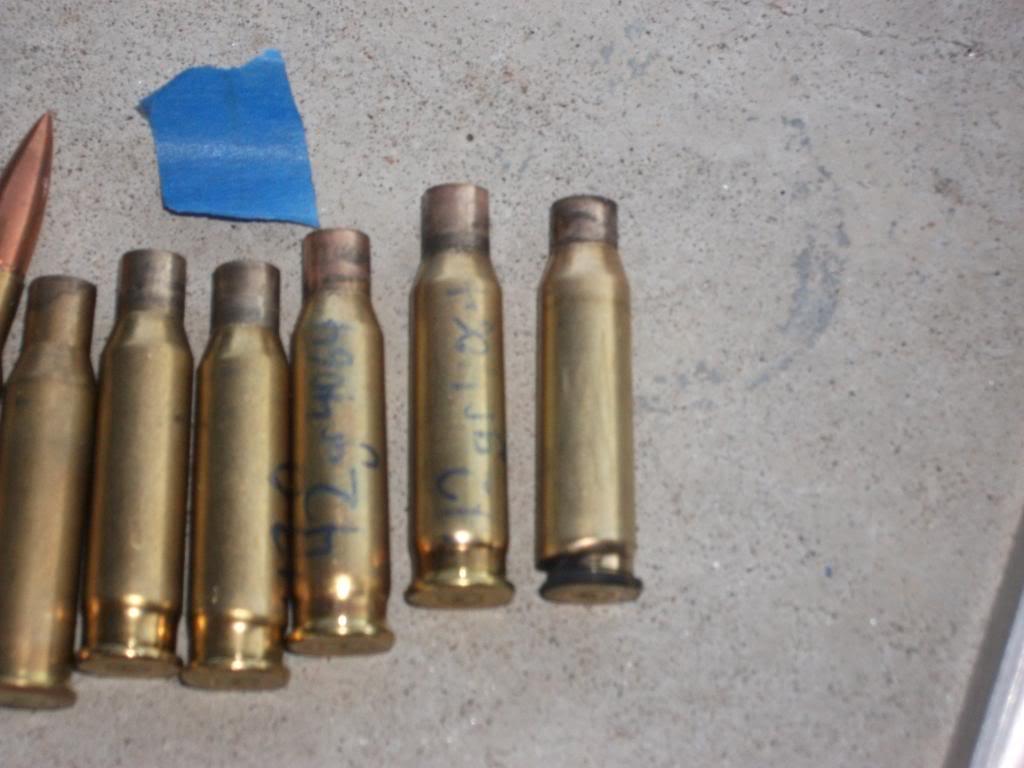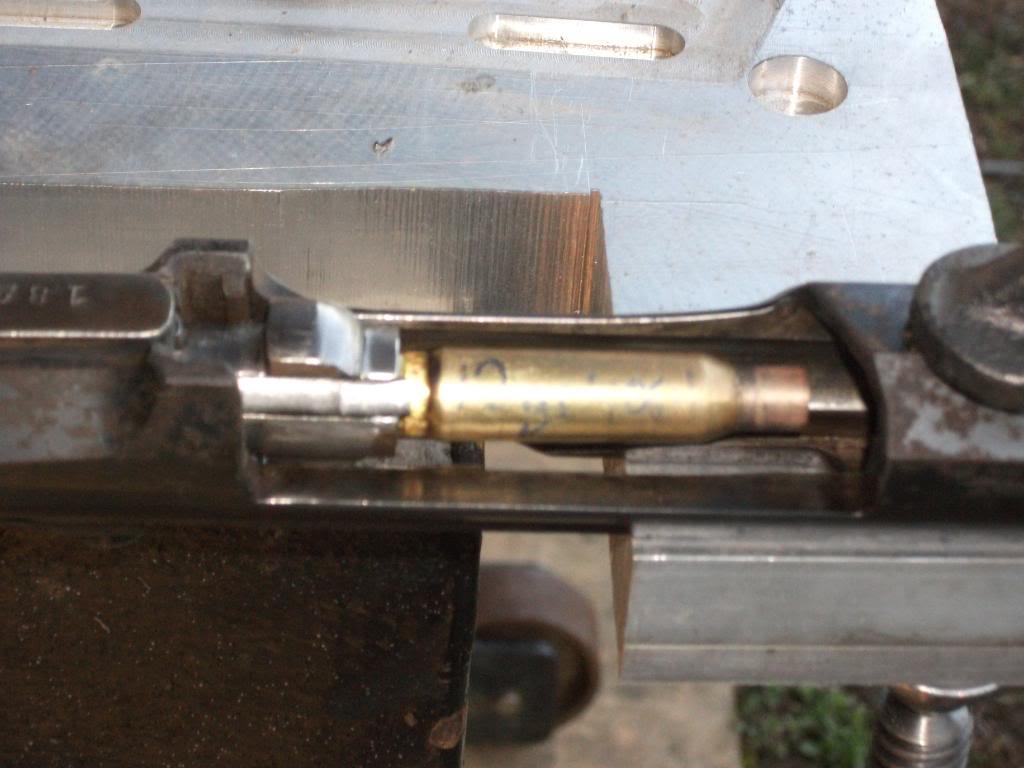A continuation of earlier ponderings, but w/ actual results.
A fellow a while back was worried if his new Lee-Enfield was safe to shoot because of slight swelling near the base of the cartridge.
Well, as best as anyone could advise, it was perfectly OK to shoot. But I got me to wondering- How much is REALLY too much expansion to be safely contained by a new brass case in, say, a .303" SAA (British) chamber?
As the 7.62x54R "Russian" is rather fatter at the base, and has a fairly similar rim thickness, just a bit shorter in length, it seemed an easy way to have a "radical" oversize w/o ruining a good rifle. (OD at the base is about 0.035" larger.)
Shortened some cases and loaded a charge of powder rather too hot for a 303, but OK for the Russian round. Also grossly overloaded a 30-30 case w/ a standard max. 303 british powder charge (bullet seated about 0.030" deep).
Made a remote firing rig and had an otherwise VACANT range.
DON'T TRY THIS YOURSELF! DEATH IS AN OPTION HERE.
So first test:
Well, a grossly oversized chamber and 303 W-W and R-P brass seem to get along. (The R-P swelled back further than the Winchester.) Once fired 30-30 brass DID fail.)
LH-7.62x54r____________ RH-Shortened 303 British commercial mfg case
Case on the right side is the 30-30
Fired cases extracted normally, except the 30-30 rim was too small.
Going to section some cases for funsies.
Sorry for the sub-par photos. No borrowed camera today. (Plenty more pics, this is just a sample- they're all lacking in fine detail- phooey!)
No in depth study yet, but, overall, I'm surprised at the LACK of dramas. Even the ruptured 30-30 did no damage to the rifle, but a human shooter would likely have been scalped, due to the rifle design. (No gas baffle at all on the top of the action.) The brass is quite resilient it seems. More later...Information

Warning: This is a relatively older thread
This discussion is older than 360 days. Some information contained in it may no longer be current.
- Knowledge Library

- MKL Entry of the Month
- Australia
- Austro-Hungarian Empire
- Canada
- Czechoslovakia
- Denmark
- Finland
- France/Belgium
- Germany
- Italy
- Japan
- Norway
- Russia
- South America
- Sweden
- Switzerland
- Turkey
- United Kingdom
- United States
- Yugoslavia
- Is my rifle authentic or a fake?
- Jay Currah's Lee Enfield Web Site
- On-line Service Records (Canada)
- Technical Articles/Research
- Forum
- Classifieds

- What's New?
-
Photo Gallery

- Photo Gallery Options
- Photo Gallery Home
- Search Photo Gallery List
-
Photo Gallery Search
- Video Club

- iTrader
















 PM
PM
